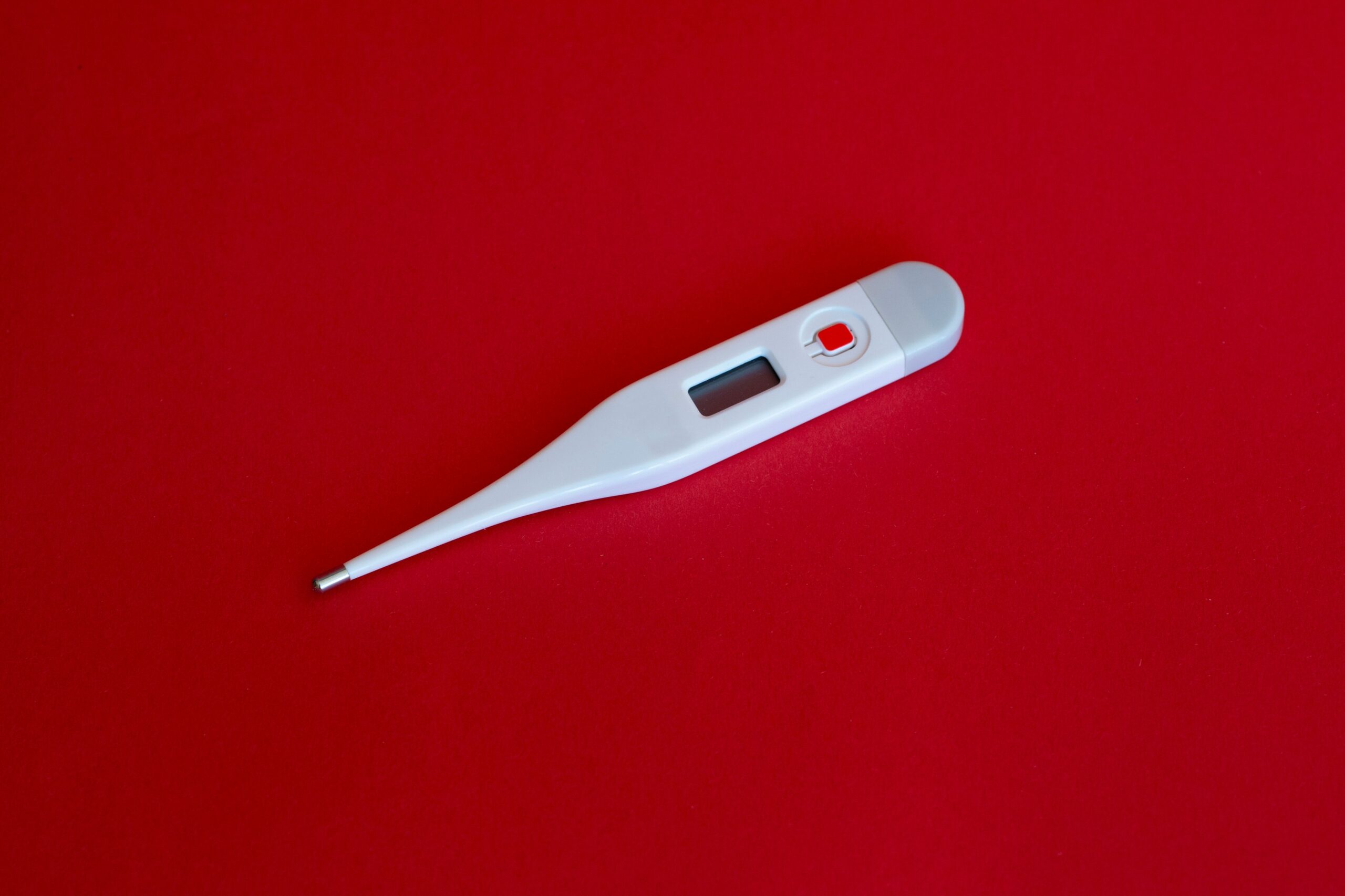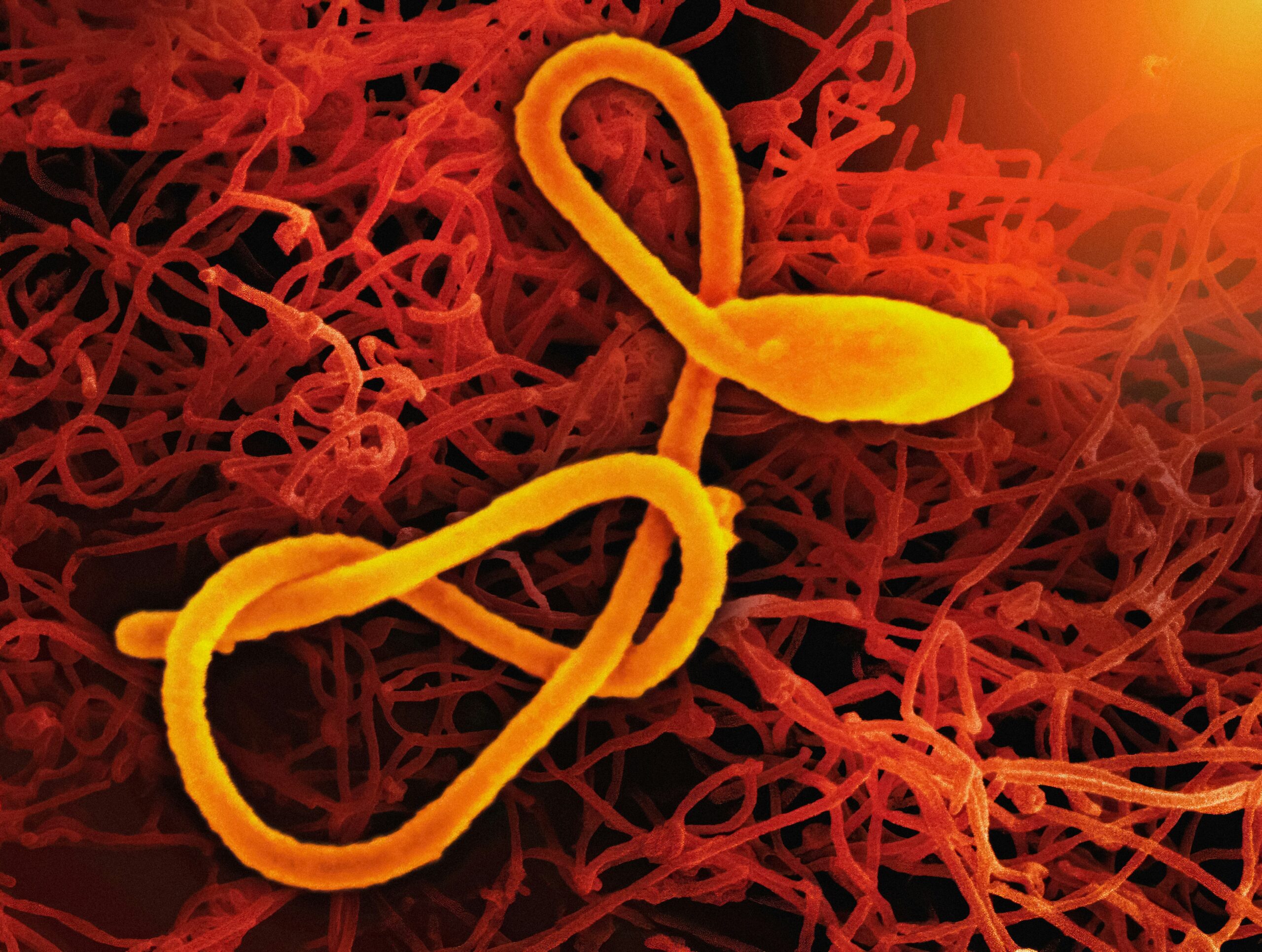Marburg virus is a dangerous human pathogen that has previously caused epidemics in different regions. This virus disease reporting started in August 1967 in Marburg and Frankfurt, Germany. It infected many laboratory workers, and it was discovered that Ugandan-imported African great apes were the source of the infection.
The virus continues to threaten disease in several African nations today; this new outbreak was confirmed in Rwanda in 2024.

It is a rare, severe viral hemorrhagic fever caused by the Marburg virus. This enveloped virus can be transmitted in many ways. Marburg disease is characterized by systemic inflammation, central to its disease process. Different symptoms are divided into three phases of the disease. After the main phases, either the patients die from the disease or remain in a long recovery and rehabilitation phase.
There are currently no approved therapies for the Marburg virus. Supportive care was the mainstay of treatment during the outbreak. Several trials and attempts have also been made to create a relevant Marburg virus vaccine. Learn more.
The Marburg virus is an extremely lethal single-stranded, enveloped disease-causing pathogen of the filovirus![]() family. Formerly known as green monkey disease. The Marburg virus is in the same family of viruses as the Ebola virus. The two viruses produce hemorrhagic fevers of a similar course. The Marburg virus is the most lethal pathogen in the world. While it is infrequent, its outbreaks come in with much worry from the disease's infectiousness. Identification and subsequent prompt initiation of supportive treatment is important to prevent the disease's associated high morbidity and mortality. But how can it be contracted?
family. Formerly known as green monkey disease. The Marburg virus is in the same family of viruses as the Ebola virus. The two viruses produce hemorrhagic fevers of a similar course. The Marburg virus is the most lethal pathogen in the world. While it is infrequent, its outbreaks come in with much worry from the disease's infectiousness. Identification and subsequent prompt initiation of supportive treatment is important to prevent the disease's associated high morbidity and mortality. But how can it be contracted?
Marburg is also a zoonotic pathogen, which means it can infect other animals, too. A species of Ugandan monkeys![]() spread the virus to people. In addition, the Rousettus fruit bat
spread the virus to people. In addition, the Rousettus fruit bat![]() has been blamed for being the animal reservoir. The causative species has been inferred from epidemiological outbreaks in caves or miners in sub-Saharan Africa. Virus isolation by culture has demonstrated its presence in these bats, as antibodies have been against it. Therefore, it occurs among people who go to endemic areas and come into contact with infected animals: animal source, exposure route, and unknown body fluid.
has been blamed for being the animal reservoir. The causative species has been inferred from epidemiological outbreaks in caves or miners in sub-Saharan Africa. Virus isolation by culture has demonstrated its presence in these bats, as antibodies have been against it. Therefore, it occurs among people who go to endemic areas and come into contact with infected animals: animal source, exposure route, and unknown body fluid.
However, there are different sources where people view it as being spread in any way through the infected feces of the animal. It occurs when the virus enters the body through skin or mucous membranes after indirect contact with animal drops or from direct contact with the animal.

A different transmission route is thought to have exposed humans through symptomatic patients' viral body fluids![]() . Transmission in the home or the hospital (if control measures are suboptimal) can occur from person to person. This poses a risk to those living in the same house and to health care personnel. So, you might contract the infection by touching contaminated surfaces (like mattresses or clothes exposed to body fluids). Therefore, a person can spread the virus if it can be detected in the blood.
. Transmission in the home or the hospital (if control measures are suboptimal) can occur from person to person. This poses a risk to those living in the same house and to health care personnel. So, you might contract the infection by touching contaminated surfaces (like mattresses or clothes exposed to body fluids). Therefore, a person can spread the virus if it can be detected in the blood.
Human outbreaks have not shown airborne transmission, but droplet transmission to mucous membranes is probable. Sensitization to infection via direct aerosolization to the respiratory tract has been documented. It has also been demonstrated that the virus can be transmitted in semen after infection and can be identified in semen.
Every infectious disease has an incubation period. It is the time that passes from the time a patient contacts the pathogen until the first symptoms of the disease become evident. If a patient becomes infected with the Marburg virus, the incubation period is between 3 and 21 days![]() . Following this interval, three stages of the disease are commonly recognized. Next, we will go through each phase and the symptoms of Marburg disease.
. Following this interval, three stages of the disease are commonly recognized. Next, we will go through each phase and the symptoms of Marburg disease.
This is the disease's generalization phase, called phase one. Initially, they present with nonspecific signs and symptoms that are common to other viral and bacterial infections. These might be chills and malaise. Other painful symptoms include but are not limited to, muscle and joint pains and headaches. Similarly, other patients have gastrointestinal symptoms.
A few days into the disease, these symptoms can worsen. When aggravated, a maculopapular or erythematous rash![]() is also seen during aggravation. Those aren't the symptoms that screech Marburg virus at us. This is a common course, along with many other diseases that can only be diagnosed with the help of medical exams meant to detect the Marburg virus.
is also seen during aggravation. Those aren't the symptoms that screech Marburg virus at us. This is a common course, along with many other diseases that can only be diagnosed with the help of medical exams meant to detect the Marburg virus.

The early organ stage follows this step in the disease process. At this stage, a variety of other inflammatory conditions can happen. Conjunctivitis![]() observed in patients. It also represents a stage during which signs of hemorrhagic fever occur. These symptoms may include an extremely high fever and a lower-than-normal body temperature; they can occur intermittently. Both cases threaten the body.
observed in patients. It also represents a stage during which signs of hemorrhagic fever occur. These symptoms may include an extremely high fever and a lower-than-normal body temperature; they can occur intermittently. Both cases threaten the body.
More serious signs can include bleeding from the mucous membranes, vomiting blood, and blood in the stool. Petechiae are also observed in patients, and later neurological symptoms appear. Neurological symptoms consist of confusion, seizures, and restlessness. Coma may even occur.
Phase three can take two different courses. After day 13, patients enter the late organ or convalescent phase. This means that they either succumb to the disease or have an extended period of recovery and rehabilitation. Severe cases progress from obstruction to hypotension, shock, and multi-organ failure. Most fatal cases end in the second week of illness, an average of nine days after onset. Those who survive this period are likely to recover. However, the recovery period is long and prone to complications.
Marburg disease causes symptoms that overlap with those of other hemorrhagic fevers (like malaria), so it is not easy to diagnose based on symptoms alone. Consequently, inspections and diagnostic exams should be held to identify this microorganism. Various methods are available to diagnose Marburg disease. The method of detection is based on the evolution of Marburg infection. Common examples of diagnostic specimens are blood, other body fluids, and tissues obtained through autopsy. Probes should be collected under maximum sanitary conditions.

Marburg is also reversible; many disease signals can be exposed simply through commonplace blood tests. Patients display laboratory test abnormalities during these diseases, including elevated serum creatinine levels. Hematology test results also reveal the two abnormalities of lymphopenia and thrombocytopenia seen in the weekly first 7 days of onset but only the latter. Furthermore, blood is a sample that can be used to identify the virus in a serological exam.
Diagnosis can be done with the immunoenzymatic test ELISA![]() . Such a blood test can identify antibodies from the material sourced from a patient. Antibodies are proteins produced as part of the immune system to combat various diseases, particularly viruses. This is the method of choice for variant discrimination and aids in the early detection of disease. In the later stages of an illness or after a person has recovered, the ELISA test can also be used.
. Such a blood test can identify antibodies from the material sourced from a patient. Antibodies are proteins produced as part of the immune system to combat various diseases, particularly viruses. This is the method of choice for variant discrimination and aids in the early detection of disease. In the later stages of an illness or after a person has recovered, the ELISA test can also be used.
However, there are no approved treatments for the Marburg virus to treat this illness. The mainstay of treatment is supportive care. Although various pharmaceuticals are in the pipeline, there are no approved treatments so far—Don't panic. The prevention of the spread of the infection should also be enforced. So read on and learn more.
The principal control measures include patient isolation, repeated practice of hand hygiene, surveillance and management of staff with potential exposures, and avoidance of entering the patient rooms by visitors. Patients remaining or traveling around Marburg virus locations will need to be sufficiently skilled to detect indicators and symptoms of the infection, take steps to prevent the infection through guidance and stay away from bats that may also cause the sickness to be infected. It should be stressed that those who are sick shall be quarantined and isolated as soon as they get the disease.

Symptom relief is the primary method of treatment. Oral fluids are given to resuscitate the patients, and measures are taken to prevent inciting fever. Medical personnel need to monitor patients continually. Supportive care is still an essential treatment component to give patients the best prognosis and outcome. Specialized biodefense units are best suited for the treatment of Marburg virus patients.
Different drugs have been investigated for their activity against the Marburg virus. Several of them still need to demonstrate major survival advantages. However, other drugs have been effective in animals, purportedly extending longevity in monkeys. As many treatment options for acute appendicitis are still being studied, practitioners need to remain up-to-date with emerging data.
Many tests and attempts have been made to develop a potent Marburg virus vaccine. DNA-based vaccines![]() targeting filoviruses represent an easy-to-produce and promising modality with an acceptable safety profile, but the clinical setting has revealed poor immunogenicity. Other adenovirus-based vaccines
targeting filoviruses represent an easy-to-produce and promising modality with an acceptable safety profile, but the clinical setting has revealed poor immunogenicity. Other adenovirus-based vaccines![]() have also been tried. Another critical finding of importance to researchers was that post-exposure prophylaxis with the Marburg glycoprotein vaccine reduced deaths.
have also been tried. Another critical finding of importance to researchers was that post-exposure prophylaxis with the Marburg glycoprotein vaccine reduced deaths.
The 2013 Ebola virus outbreak urgently needed a vaccine that led to faster clinical trial processes. Nevertheless, some challenges to vaccine design still exist, and additional data is now required to assess these vaccines' potential utility and efficacy.
Currently, there is no approved drug against Marburg, so the disease usually has a poor prognosis and results in high case fatality rates. The seriousness of the disease depends on several factors. Known outbreaks suggest a broad diversity of disease severity in patients. This is probably due to the edibility of health care, infectious dose, type of infection, the virulence of the strain, and population health level.
Marburg disease spreads quickly from one human to another and can be deadly. Hemorrhagic fever caused by the Marburg virus has a similar prognosis to Ebola virus infection and has a high mortality rate. Hence, be sure that you stick to all the safety measures to save your health.

Marburg virus disease patients generally experience it tough, making complications probable. It puts the whole organism under stress, and the likelihood of complications in those who survive is high. Hemorrhagic fever complications include multi-organ failure, shock, and eventually death. Because of this, human-to-human transmission must be limited, and secondary infections must be addressed accordingly.
MOF is the failure of the system by a greater number of organs. The MOF is a potentially life-threatening condition and requires immediate medical attention. So, want to know its symptoms? Symptoms of multiple organ failure are specific to the organs that are failing. This results in breathing problems, fainting or loss of consciousness, low blood pressure, and abnormal heart rhythm. Multiple organ failure leads to death, and the more systems that fail, and the more severe and sustained their failure, the more likely death resulting from multi-organ failure.
Shock is a systemic derangement with deadly rotation, especially a rapid drop in systolic pressure and multi-organ gambling. Maybe you know this, but what is sepsis, anyway? One type of shock is septic shock, and this septicemia stage is the final stage of shock within the body. Shock is a very serious condition that needs medical attention ASAP.
Clinical diagnosis is difficult early in the disease because symptoms are nonspecific and identical to many other infectious diseases. Hence, a complete differential diagnosis of Marburg fever is necessary. The condition often presents either as an Ebola viral illness![]() or as malaria
or as malaria![]() or typhoid fever
or typhoid fever![]() , etc. It has to consider any disease with a common symptom, regardless of whether it is a common symptom, and doctors must be aware of that.
, etc. It has to consider any disease with a common symptom, regardless of whether it is a common symptom, and doctors must be aware of that.

In many ways, Ebola virus infection is similar to Marburg disease. The largest epidemic of this virus in history occurred in Africa. Ebola disease is a highly infectious and highly deadly disease. These pathogenic microorganisms are zoonotic and can be transmitted from person to person and between species. They can also be infected by entering through contact with fruit bats/dogs, as in Marburg disease. Symptoms are also similar, so they should be tested to know the correct pathogen responsible for the infection.
An additional disease with many commonalities with Marburg disease is malaria. Malaria is a life-threatening tropical disease caused by pathogens transmitted to people through infected mosquitoes. It can slip out of disguise even months after you are infected. The clinical spectrum of malaria spirochete infection extends from asymptomatic to lethal. Its course also has a high temperature. The good thing is you can get the vaccine and avoid bad things that happen.
Typhoid fever is an acute systemic bacterial disease that can also resemble the Marburg viral illness. It has a course associated with high fever and poor general condition. Symptoms from multiple organs, such as headache and digestive symptoms, are diffuse or nonspecific in adults. Thus, the course may resemble that of Marburg's viral infection. The best way to do this is to get a vaccinator, which can save us from typhoid fever.